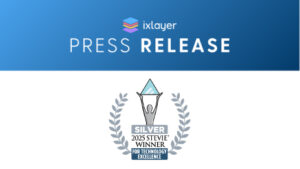Key Takeaways from How Pharma Can Leverage At-Home Testing to Maximize Brand and Commercial Success
ixlayer’s recent webinar, How Pharma Can Leverage At-Home Testing to Maximize Brand and Commercial Success, shed light on the transformative changes sweeping through the healthcare sector, particularly focusing on the rise of at-home testing, biopharma support, and telehealth. This shift, driven by technological advancements and changing patient behaviors, is not just an evolution but potentially a revolution in how healthcare services are delivered and consumed.
In our two-part blog series, we’ve recapped key takeaways from the webinar.
Key Takeaway #1 – Clinical and Commercial Success
Dave Guiga, a panelist on the webinar and the Executive Director of Commercial Innovation at AstraZeneca, emphasized that at-home testing provides a significant advantage for biopharma companies by simplifying the recruitment and retention of participants. By reducing the need for frequent visits to clinical sites, pharmaceutical companies can attract a broader range of participants, including those in remote or underserved areas. This can lead to more diverse and representative study populations, ultimately enhancing the robustness of trial results.
“Our clinical teams begin seeing the advantages of these at-home screeners and diagnostic tests with randomization and enrollment,” Dave Guiga told our moderator, Jeff Davis, General Manager of Biopharma at ixlayer. “Then again pre-launch, around DSA campaigns, getting patients activated and asking the right questions.”
The consumer preference for convenient healthcare experiences often drives higher engagement – a key factor to consider as drugs are first being brought to market. Patients feel less harried and are more open to meaningful participation when they’re doing it on their own schedule. Guiga adds that organizations like his are “trying to meet patients where they are in today’s new model. These sponsored programs offer a great way for patients to take action.”
Key Takeaway #2 – Confidence, Convenience & Care
A surge in consumer confidence following the COVID-19 pandemic is one of the macro factors driving patients to seek out home-testing. The pandemic demonstrated that a vast majority of patients could effectively execute tests at home and trust the results. This newfound confidence is a significant driver in the adoption of at-home testing.
“The pandemic showed the vast majority of patients that they can execute a test on their own at home,” Guiga said. “And they can have confidence in the results that they’re getting.”
That confidence is paired with continuous search for convenience, a trend across industries, whether it’s grocery shopping or selling a car. Consumers are constantly trying to find convenience in healthcare, and when it reveals itself, they’re quick to adopt. The shift towards at-home testing and telehealth is a reflection of that.
“The rise in the use of telemedicine, remote care and at-home diagnostic screening fits seamlessly into that trend,” Guiga said.
Rapid advancements in screening and diagnostic tests have also made it easier for patients to perform these tests themselves, across a broad spectrum of health conditions. These innovations are making at-home testing more relevant, accessible and reliable, further propelling its adoption.
Key Takeaway #3 – Improve patient access
Another panelist, Bernard Esquivel, MD, PhD, and Chief Medical Officer at ixlayer, highlighted a critical issue: the shortage of clinicians. The Association of American Medical Colleges projects a significant shortfall in primary care physicians and specialists by 2030. This shortage, coupled with a fragmented healthcare system, underscores the need for more efficient and accessible healthcare solutions like at-home testing and telehealth.
Dr. Esquivel also pointed out that many rural areas in the U.S. are designated as health professional shortage areas. At-home testing and telehealth services can bridge this gap by providing essential healthcare services without the need for long commutes or extensive wait times.
“Roughly 77% of rural areas in the United States are designated as health professional shortage areas,” Dr. Esquivel told moderator Jeff Davis. “That means you don’t have either enough physicians or enough resources overall to take care of basic needs. So for those individuals, just being able to access healthcare, to access testing, is a big problem. It’s a big problem in terms of commuting. It’s a big problem actually finding someone that can guide you through the process of what’s best for you.”
Patient behavior has also evolved significantly. Many Americans now lack a dedicated primary care physician, leading them to rely on urgent care and emergency departments for routine health issues.
“That obviously leads to a decrease in screening and diagnostic testing,” Daive Guiga added. “Which exacerbates the situation. Depending on the therapeutic area, 25% to 80% of Americans are living with undiagnosed conditions, which means they’re not being treated.”
At-home testing can mitigate this by providing a convenient alternative for regular health monitoring. Ensuring the quality and accuracy of at-home tests is paramount. Advances in technology have made it possible for these tests to match the accuracy of traditional lab tests. However, continuous monitoring and quality assurance are essential to maintain this standard.
Dr. Esquivel told the panel that “technology allows us to have better devices that let us have access to more and more bio markers with the same clinical quality, and therefore actionability, as brick and mortar.”
Next week…
The ixlayer webinar highlighted pivotal transitions towards at-home testing and telehealth, driven by advancements in technology and evolving patient expectations. The takeaways above are just some of the insights around this paradigm shift that have the potential to fundamentally alter healthcare delivery, improving patient access and allowing the pharmaceutical industry to benefit significantly through better patient recruitment, more effective pre-launch strategies cost efficiencies, and enhanced data reliability, thereby propelling medical research and commercial success to new heights.
Next week we’ll bring you three more key takeaways from How Pharma Can Leverage At-Home Testing to Maximize Brand and Commercial Success.
CLICK HERE to learn more about how ixlayer works with biopharma leaders to integrate a complete end-to-end, direct-to-patient experience into their marketing campaigns.
About ixlayer
ixlayer is the only end-to-end, direct-to-patient platform built for biopharma and optimized for patient choice. We help biopharma companies connect with patients from testing to treatment with speed, transparency, control and impact.




